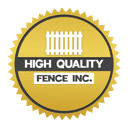Best Practices for Manteca Fence Repair and Maintenance

When it comes to preserving the longevity and appearance of your property, proper fence repair and maintenance are crucial. Over time, fences can endure wear and tear from weather, pests, and general use, which can compromise their effectiveness and aesthetic appeal.
Understanding the best practices for fence repair can help you address these issues proactively, ensuring your fence remains sturdy and attractive. From routine inspections to timely repairs, adopting these strategies will not only enhance the durability of your fence but also save you from costly replacements down the line.
Key Signs Your Fence Needs Repair
Identifying when your fence requires repair is crucial for maintaining its functionality and appearance. Regular inspections can help you spot problems early and prevent further damage. Look out for these key signs that indicate your fence may need attention:
Leaning or Sagging Sections
A leaning or sagging fence often points to structural issues. It could mean that the posts are no longer secure, possibly due to soil erosion or damage to the base. Addressing this promptly can prevent more extensive repairs.
Broken or Missing Boards
Broken or missing boards compromise both the security and aesthetics of your fence. This damage can occur from weather conditions or impacts. Replacing these boards quickly can prevent further deterioration and maintain the fence’s effectiveness.
Rust on Metal Components
Rust on metal parts of your fence, such as hinges or panels, can weaken the structure and lead to more severe damage. Regularly cleaning and treating these areas can prevent rust from spreading and extend the life of your fence.
Cracked or Rotting Posts
Cracks or rot in the fence posts indicate significant damage that could compromise the fence’s stability. Addressing these issues by replacing or treating affected posts is essential for ensuring the overall strength and durability of your fence.
Essential Tools for Fence Maintenance
Maintaining a fence requires the right tools to keep it in top shape. Begin with a sturdy pair of work gloves to protect your hands during inspections and repairs. A tape measure is essential for checking the alignment and dimensions of your fence. For wood fences, a hammer or nail gun and a saw for cutting boards are necessary. Metal fences might require a wrench or pliers to tighten bolts and screws. Additionally, a wire brush or sandpaper is useful for cleaning rust or paint. Having these tools on hand makes the maintenance process smoother and more efficient, helping you address issues promptly.
Choosing the Right Fence Materials
Selecting the right materials for your fence is crucial for both durability and aesthetics. Wood is a classic choice, offering a natural look that can be stained or painted to match your home. However, it requires regular maintenance to prevent rot and insect damage. Vinyl fences are low-maintenance and resistant to weather conditions, making them a great option for areas with harsh climates. For a more modern look, aluminum or steel fences provide durability and require minimal upkeep. Consider your local weather, desired appearance, and budget when choosing materials to ensure your fence meets your needs and lasts for years.
Steps to Prevent Fence Damage
Preventing fence damage involves taking proactive measures to ensure its longevity and effectiveness. By addressing potential issues before they escalate, you can maintain the integrity and appearance of your fence.
- Apply Weather-Resistant Sealant: Protect wooden fences from moisture and UV rays by applying a weather-resistant sealant. This helps prevent wood rot and fading, extending the life of your fence and maintaining its appearance.
- Trim Vegetation Regularly: Keep plants and shrubs away from the fence to avoid moisture buildup and potential damage. Regular trimming prevents vegetation from trapping water against the fence and causing rot or decay.
- Inspect and Tighten Fasteners: Regularly check for loose nails, screws, or bolts and tighten them as needed. Loose fasteners can weaken the fence structure and lead to further damage if not addressed promptly.
- Ensure Proper Drainage: Proper drainage around the base of the fence prevents water from pooling and causing wood rot. Ensure the ground slopes away from the fence to keep moisture from accumulating at the base.
- Address Minor Issues Quickly: Fix small problems as soon as they arise to prevent them from becoming major issues. Prompt repairs help maintain the fence’s functionality and prevent costly repairs down the line.
Taking these steps can significantly reduce the risk of fence damage and ensure that your fence remains functional and attractive for years to come. Regular maintenance is key to preserving its value and appearance.
Common Fence Repair Mistakes to Avoid
Repairing a fence can be straightforward, but common mistakes can undermine your efforts. By steering clear of these pitfalls, you’ll ensure a more effective and lasting repair.
Skipping Proper Preparation
Failing to prepare the area before starting repairs can lead to uneven or ineffective results. Ensure you clean the worksite thoroughly, removing any debris or obstacles. Proper preparation helps address all issues at once and creates a stable foundation for effective and long-lasting repairs.
Using Mismatched Materials
Choosing materials that don’t match the existing fence can result in a disjointed appearance and weakened structural integrity. It’s essential to select materials that align in type, size, and finish with the original fence. This consistency ensures a seamless repair that blends well with the existing fence structure.
Ignoring Underlying Issues
Overlooking underlying problems, such as poor drainage or pest damage, can lead to repeated issues and further damage. Identifying and addressing these root causes is crucial for preventing future problems. By tackling the underlying issues, you’ll ensure the durability and longevity of your fence repair.
Rushing Through Repairs
Rushing through fence repairs can lead to incomplete or subpar work, compromising the fence’s stability and appearance. Take your time to carefully inspect, measure, and secure all components. Thoroughly completing each step ensures a durable, effective repair that will stand up to wear and tear over time.
How Weather Affects Fence Longevity
Weather conditions play a significant role in the lifespan of your fence. Excessive rain can lead to wood rot and rust on metal components, while intense sunlight can cause fading and brittleness. Extreme temperatures can cause materials to expand and contract, leading to warping or cracking. Wind can also cause physical damage, especially to less sturdy fences. To combat these effects, select weather-resistant materials and apply protective coatings. Regular maintenance and inspections are also essential to address any weather-related damage early. Understanding how different weather conditions impact your fence helps you take appropriate measures to extend its longevity.
Professional Fence Repair vs. DIY Solutions
Choosing between professional fence repair and DIY solutions depends on various factors like the extent of damage and personal expertise. Evaluating these aspects can guide you to the most effective approach.
- Expertise and Experience: Professionals bring specialized skills and extensive experience, ensuring high-quality repairs and longevity for your fence. DIY repairs might lack this level of proficiency, risking incomplete fixes.
- Cost Considerations: While DIY repairs can be cheaper upfront, professionals may save you money in the long run by addressing issues thoroughly and preventing future problems. Weighing the costs can be crucial.
- Time and Effort: DIY repairs require significant time and effort, including purchasing materials and tools. Professionals handle everything efficiently, allowing you to focus on other priorities while ensuring the job is done right.
- Complexity of Repairs: Complex repairs, like structural issues or extensive damage, often require professional intervention. DIY solutions may not adequately address such problems, leading to recurring issues and additional costs.
Importance of Regular Fence Inspections
Regular inspections are crucial for maintaining the integrity of your fence and preventing costly repairs. By routinely checking for issues such as loose boards, rust, or signs of rot, you can address problems before they escalate. Inspections should include looking at the entire length of the fence, including posts and fasteners, to ensure everything is secure. Seasonal inspections, especially after harsh weather, can help you catch any damage early. Keeping a maintenance schedule and documenting any issues observed during inspections will help you stay on top of necessary repairs and keep your fence in optimal condition.
Budgeting for Fence Repair and Upgrades
Budgeting for fence repair and upgrades involves planning for both immediate fixes and long-term improvements. Start by assessing the current condition of your fence and identifying any urgent repairs needed. Obtain estimates from professionals for major repairs or upgrades to get a clear idea of the costs involved. Include a contingency fund in your budget for unexpected issues that may arise. Additionally, consider setting aside funds for future maintenance to prevent costly repairs down the line. Proper budgeting ensures you can address repairs promptly and make upgrades that enhance both the functionality and appearance of your fence.
Enhancing Fence Aesthetics Through Maintenance
Maintaining your fence isn’t just about functionality—it also affects its appearance. Regular cleaning to remove dirt, mold, or stains helps keep your fence looking fresh and well-maintained. For wooden fences, applying a coat of paint or stain can enhance its appearance and protect against the elements. Trimming any overgrown vegetation around the fence will prevent it from looking unkempt and ensure that the fence remains the focal point of your landscape. By focusing on both the functionality and aesthetics of your fence, you can create a visually appealing boundary that complements your home and adds value to your property.
Maintaining and repairing your fence is essential for ensuring its longevity and enhancing your property’s curb appeal. By staying vigilant for signs of damage, using the right tools, and choosing suitable materials, you can address issues effectively and keep your fence in great shape. Regular inspections and preventative measures will help you avoid costly repairs and maintain a beautiful fence that complements your home.
For professional fence repair and maintenance services in Manteca, trust the experts at High Quality Fence. Contact us at 209-815-9015 or email info@highqualityfence.com. Visit us at 1112 N. Main Street #171, Manteca, CA 95336 to discuss your needs and get started on enhancing your fence today!


